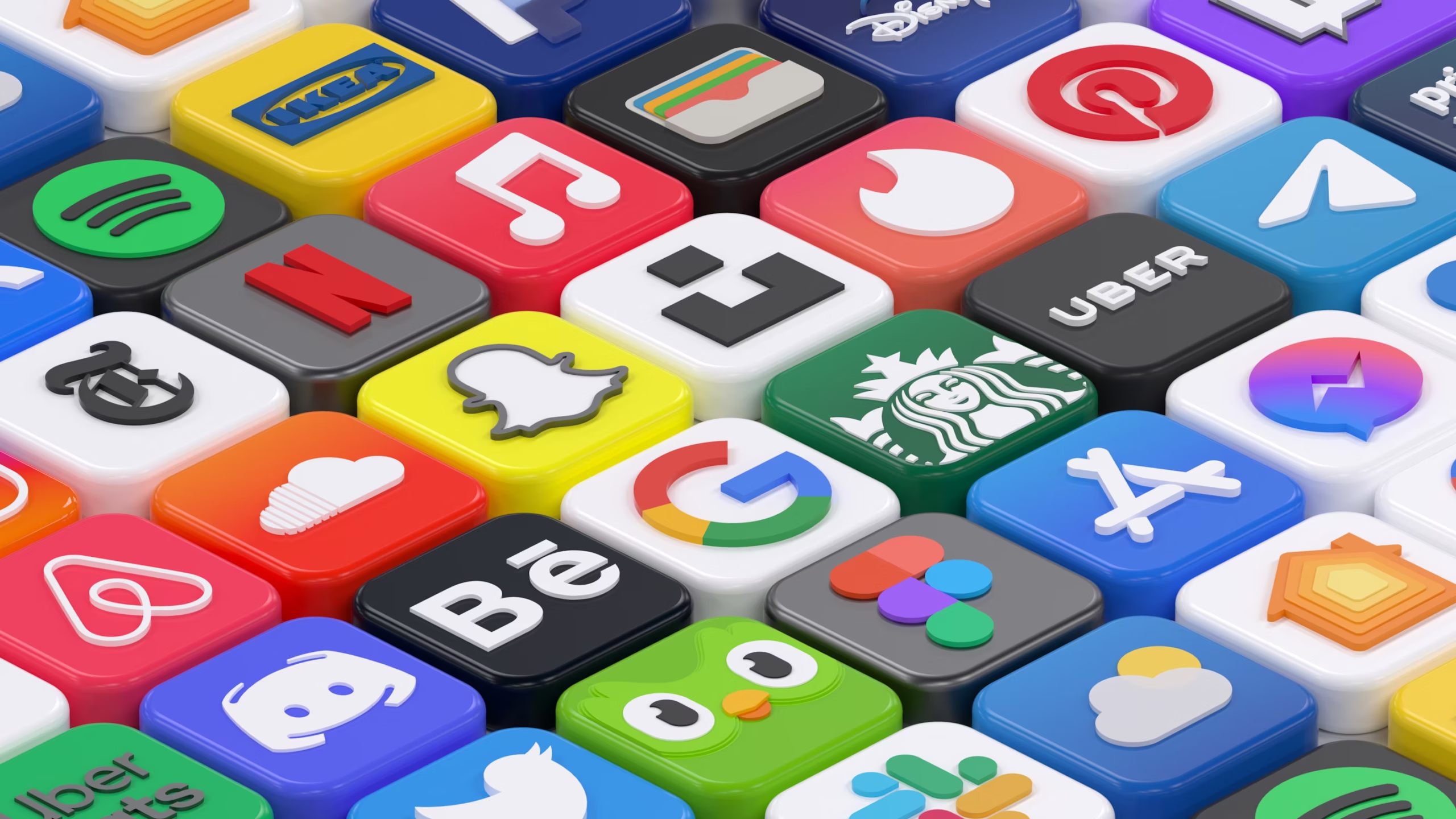The Future of Telecoms … from dumb pipes to platforms for a more intelligent life … how the world’s most innovative telcos seek to become lifestyle platforms and digital nervous systems
April 8, 2025

- Megatrends 2035: the 6 dramatic forces shaking up every market
- Accelerating Growth: leading in a world of uncertainty, change, and opportunity
- Next Generation Business Models: redefining value, reinvented with AI
- Vodafone CEO Accelerator: preparing today’s business leaders to shape tomorrow’s opportunities
The global telecommunications industry is undergoing a profound transformation. As connectivity becomes ubiquitous and commoditized, telcos face an existential choice: evolve beyond the traditional “dumb pipe” model or risk irrelevance. The telco of the future must become an intelligent, human-centric platform that embeds itself into everyday life and business operations. By embracing AI, edge computing, digital services, and platform thinking, telcos can move from infrastructure providers to orchestrators of integrated, personalized, and predictive services.
The end of the dumb pipe
For decades, telcos have focused on infrastructure: building networks, acquiring spectrum, and competing on coverage and pricing. But this model is collapsing under the weight of commoditization. Over-the-top (OTT) services capture most of the value, while telcos bear the cost of bandwidth. The result is shrinking margins, rising churn, and diminished customer relevance.
To remain competitive, telcos must transition from connectivity providers to value creators. This means offering services that are intelligent, anticipatory, and integrated into the user’s life. The pipe is a utility, the connectivity is a commodity. The goal is not just to connect people, but to enhance how they live, work, and interact with the world.

Reinventing telcos for consumers: platforms to enable life
The future telco will be a personal operating system for life. Services will expand far beyond voice and data to include:
- Digital Identity: Secure and portable ID across platforms
- Financial Services: Wallets, insurance, credit, advice, and savings
- Entertainment & Content: Streaming, gaming, news, books, communities
- Health & Wellness: Telemedicine, mental health, wearables, diagnostics
- Smart Living: Home automation, energy management, family life
- Work: Work and life integration, home working, productivity, education
These services will be delivered via seamless, AI-powered interfaces that personalize experiences based on behavior, context, and need. Telcos must transition from passive service providers to active experience curators.
Reinventing telcos for business: ecosystems for digital growth
In B2B markets, telcos will shift from connectivity vendors to digital transformation partners. Future-facing services include:
- 5G & Private Networks: Industry-grade latency and reliability
- Edge Computing: Real-time processing for critical applications
- IoT Platforms: Connected devices for agriculture, logistics, health
- AI-as-a-Service: Predictive analytics, automation, decision support
- Cybersecurity: Embedded, adaptive protection, crisis management
- Business services: accounting, legal, consulting, start-ups,
Telcos can also deliver industry-specific platforms for manufacturing, education, healthcare, finance, and smart cities. This evolution unlocks new revenue streams and deeper enterprise relationships.
Global innovators leading the way
Several telcos are already redefining the sector:
- Jio (India): A digital superplatform offering telecom, e-commerce, cloud, payments, and media
- Rakuten (Japan): A cloud-native telco exporting virtualized network platforms globally
- Circles (Singapore): 100% digital experience with white-labeled platforms for other telcos
- STC (Saudi Arabia): Diversifying into fintech, data centers, and enterprise AI
- Safaricom (Kenya): Pioneer in mobile money, health, and agriculture services
- Elisa (Finland): Leader in carbon-neutral networks and AI-driven operations
- Tigo (Latam): Part of Luxembourg’s Millicom, from finance to education
A New Operating Model for the Digital Age
To realize this future, telcos must overhaul their operating models:
- Cloud-Native Infrastructure: Agile, scalable, and software-defined
- Open APIs: Enable innovation and third-party services
- AI Integration: Predictive, personalized, and automated services
- Zero-Touch Operations: Self-service onboarding, billing, and support
- Customer-Centric Design: From product features to entire experiences
This transformation also demands a cultural shift: from engineering-centric to experience-driven, from hierarchical to agile, and from siloed to ecosystem-focused.
The telco of the future must also lead on social and environmental impact, collectively adding more net positive impact:
- Digital inclusion: Affordable access and devices for all
- Sustainable networks: Renewable energy, energy-efficient operations
- Ethical AI: Transparent, secure, and responsible data use
- Social impact: Telcos as enablers of education, health, and community
Becoming Indispensable, Not Invisible
Telcos have a unique opportunity to reinvent their role in society. No longer just connectors, they can become essential companions in daily life and growth engines for business. The telco of the future will be intelligent, adaptive, and deeply embedded in how people and organizations function.
This transformation is not optional. It is strategic, urgent, and full of opportunity for those bold enough to lead. The future belongs to the telcos who choose to be more than pipes — those who choose to power possibility.
Appendix: More on the innovators
Jio (India): Digital Ecosystem Disruptor
Jio revolutionized India’s telecom landscape by launching in 2016 with ultra-low pricing, free voice calls, and high-speed 4G data. Its rapid user acquisition strategy—adding over 100 million users in six months—was underpinned by massive investment in pan-India infrastructure. What sets Jio apart is its ambition to be more than a telco: it’s building a digital ecosystem. Through platforms like JioMart, JioCinema, and JioSaavn, it integrates content, commerce, and cloud. Jio Platforms has attracted strategic investments from Google and Facebook, highlighting its tech-centric growth model. Its latest push into 5G and AI-powered services aims to power smart cities, digital healthcare, and education, making it a national digital champion.
Rakuten Mobile (Japan): Cloud-Native Pioneer
Rakuten’s growth strategy stands out for its bold, software-centric approach. It became Japan’s fourth major operator by launching a fully virtualized, cloud-native mobile network—eliminating traditional hardware dependencies. This enabled massive cost reductions and unprecedented agility in scaling services. Rakuten uses its telecom arm to complement its broader digital ecosystem—spanning e-commerce, fintech, and digital content. The company is also licensing its network model globally via Rakuten Symphony, aiming to disrupt telecom infrastructure. While network rollout challenges persist, Rakuten’s innovation-led strategy offers a blueprint for cloud-based, data-driven telecoms worldwide.
Circles (Singapore): Digital-Only Challenger
Circles is a born-digital MVNO (Mobile Virtual Network Operator) redefining customer experience through technology. Its Circles-X operating system automates everything from onboarding to billing, offering a seamless, app-based user journey. The company focuses on asset-light expansion, partnering with telcos in new markets (e.g., Australia, Taiwan, Japan) to offer branded digital services without building infrastructure. Its user-centric design, agile product updates, and AI-driven customer support allow Circles to scale efficiently and differentiate in crowded markets. It positions itself as a tech company first, telco second—making it one of the most innovative global challengers.
STC (Saudi Arabia): National Digital Transformer
Saudi Telecom Company (STC) plays a central role in Saudi Arabia’s Vision 2030. Beyond connectivity, STC is investing in digital services, cloud computing, cybersecurity, and IoT through its subsidiary, STC Solutions. It is expanding data centers across the region, aiming to make Saudi Arabia a regional digital hub. STC Pay, its digital wallet, is among the most used fintech services in the Kingdom. The launch of DARE, its innovation and entrepreneurship platform, supports startups and accelerates homegrown tech solutions. STC’s strategy aligns national transformation with global competitiveness.
Safaricom (Kenya): Inclusive Innovation Leader
Safaricom pioneered mobile money with M-PESA, a world-leading financial inclusion platform serving millions without bank accounts. The platform has expanded into credit, insurance, and merchant payments, making Safaricom a fintech powerhouse. Its innovation extends to health (M-Tiba), agriculture (DigiFarm), and education (Shupavu291). Safaricom partners with government and NGOs to scale impact, showing how telcos can drive social as well as economic value. Its recent expansion into Ethiopia opens a vast new market, leveraging its unique model to promote digital inclusion across Africa.
Elisa (Finland): AI-Driven Operational Leader
Elisa is a global leader in network automation and AI-powered efficiency. It was among the first to deploy 5G commercially and leads in self-healing networks—using AI to preempt and fix network issues automatically. Elisa Viihde, its content platform, and Elisa IndustrIQ, which applies AI to manufacturing, show its diversification beyond traditional telco services. By turning internal tools into exportable software, Elisa creates high-margin digital services. Its strategy focuses on sustainability, innovation, and profitable growth through automation and data intelligence.
Tigo (Latam): Connectivity with Purpose
Operating in Central and South America, Tigo (Millicom) focuses on bridging the digital divide through mobile and broadband services. It invests in rural coverage, affordable smartphones, and digital literacy programs. Its Tigo Money platform provides mobile financial services to millions in underserved communities. Tigo Business offers cloud and cybersecurity solutions for SMEs, driving digital transformation across emerging economies. The company aligns profit with purpose, blending infrastructure investment with social impact to build inclusive, resilient digital societies.
More from the blog